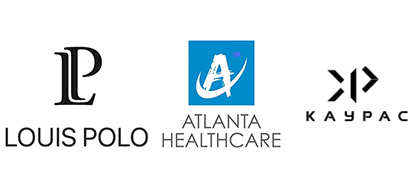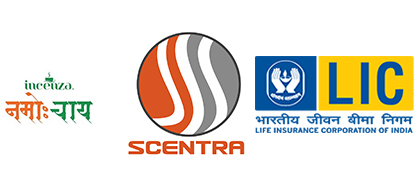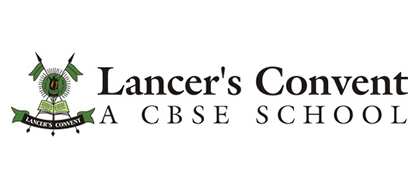Patent Registration In India
How we serve you the best

What is Patent ?
A patent is basically a right or a kind of license which is given to someone for a determined amount of time by the government which confers on the person the sole authority to exclude others from using, promoting, selling or modifying an invention in exchange of public disclosure of the details of an invention. An invention can be a solution to a technological problem, process or product and is an intellectual property.
It insures the inventor and his invention from getting exploited without valid permission and also secures the investor’s exploitation rights preventing the product being invested on from changing or altering.
The person holding this patent would get sole rights to the invention for a specified time which would assure him a market reserve.
Anyone who has an original invention or product, a new manufacturing process or an improvisation in an already existing product can apply for patent protection.
We also do Patent Litigation and Infringement Cases
Patent Types
How we serve you the best
The Patents can be broadly classified into two categories:
The Invention Patent:
This patent is not defined by a law and is inclusive of all inventions which fulfill the industrial applicability, resourcefulness and originality clause.
The Utility Model:
This kind of patent is law defined and comprises of all objects of practical utility which is subject to industrial applicability which results in functional enhancement of the utility of the product or its manufacturing.
What Is Included In Our Package?
Filing
Drafting
Hearing
Certificate
Reply
Procedure For Patent Registration
How we serve you the best

Fill Patent application form
All you need to do is complete our simple form and provide your basic information which will be required

Conduct your Patent search
After receiving all the documents from your side, we will conduct a patentability search for you.

Prepare Application
On basis of your basic information and documents, we will draft your Patent application

Patent Submission
After the final review, we will file the Patent application with Indian Patent office

Your work is completed
After submitting all the documents and Patent application, we will mail you the acknowledgement regarding same.
Rights And Validity Expiration
How we serve you the best
The patents filed will be thoroughly evaluated and examined for its resourcefulness, applicability and originality before granting rights to the applicant. The patent once granted, makes available the rights claimed by the applicant for a fixed period of time. The holder has the permission and exclusive rights to manipulate or explore the patented product or invention within the National Territory or within the valid patent limits.
The patent holder can prevent unauthorized or illegal production or trade of the patented product or the process of production of the process. The extent of protection of the patented product depends on the claims submitted by the applicant. The holder is also insured against any potential damages that might occur during the exploration or commercialization of the product between the date of publication of the patent and the date of definitive granting.
The Validity of an Invention patent is 20 years counted from the date of filing of patent application and the Utility Model Patent is applicable for 15years from the date of filing.
Criteria For Filing A Patent
How we serve you the best
Novelty : i.e. some part of it has a new development and has not been published in India or elsewhere before the date of filing of the patent application in India.
Nature of the work : This includes class & description of the work, title of the Work. In case of a website copyright, give the URL of the website. You also need be mention the language of the Work
Date of Publication : Mention the date of Publication in internal magazines (if possible). Like a company magazine or a research paper submitted to a professor does not count as publication.
Why Patent Registration
What Is A Patent ?
How we serve you the best
The Patenting system in India is governed by the Patents Act, 1970 & The Patents Rules 1972.
TA patent is a grant by the India patent office that allows the patent owner to maintain a monopoly for a limited period of time on the use and development of an invention.
This right excludes others from making, processing, producing, using, selling, and importing the product or process in India without patent owner’s consent.
Advantages Of Patent
How we serve you the best
Patent protects invention : It an intellectual property which protects your invention and prevents other to use it without your prior permission.
Nature of the work : This includes class & description of the work, title of the Work. In case of a website copyright, give the URL of the website. You also need be mention the language of the Work
Date of Publication : Mention the date of Publication in internal magazines (if possible). Like a company magazine or a research paper submitted to a professor does not count as publication.
Patent Clause Of Inventions By Employees
How we serve you the best
The invention made by an employee(s) during the course of employment and under the influence of an employment contract which assigns inventive rights to the employer and if the hiring was specifically made to utilize the employee’s skills for the inventive purpose, will belong to the employer exclusively.
In case of the invention being developed apart from the employment contract or when there is no clause which limits the invention to the employer the invention belongs solely to the employee. It is the same if the invention was done without any help physical or monetary from the employer.
The invention belongs both to the employer and the employee in cases wherein it was developed by the intellectual and skill contribution of the employee with the material, means and installation support of the employer even in case of the no employment clause.
Required Documents
How we serve you the best
There are certain documents required to file a patent:
1:
Drawing, picture or a small model of the product to be patented. This is required to comprehend and prepare the specification of the patent application.
2 :
Power of Attorney in case the product is a corporate entity.
3:
Assigning Document or papers mentioning the inventor in case of the product being a corporate entity.
In case of patents which need to be auctioned immediately on a priority basis, the following documents needs to be submitted:
1:
Official copy of the application of patent where it was filed originally issued by the PTO.
2:
Power of Attorney from the inventor
3:
Assigning document or papers mentioning the inventor in case of the product or invention being a corporate entity.
Some patents are filed under the international law which provides a unified platform and filing procedure for patent applications across the globe. In case of patents filed under the International law treaty (PCT), a single application is filed in one language. A copy of the International application and a power of attorney is required to file PCT.
Document Requisites For Filing A Patent
How we serve you the best
- 1. Triple copies of the Application form (Form 1)
- 2. Duplicates of Provisional Specification and claim submission. In case the provisional specification is already filed, a complete version must follow within a year of filing it (Form 2)
- 3. Two copies of drawing and photograph of the invention/product
- 4. Model of the product in duplicate
- 5. Two copies each of undertaking of foreign patents with a mention of number, the date of filing, status of the patents and the application form. (Form 3)
- 6. Copy of the priority document in case of urgent filings with a mention of the priority dates as and when directed by the Controller.
- 7. Declaration of inventor in case where the provisional specifications is followed by complete specification or in case of PCT filings national phase applications (Form 5)
- 8. Power of Attorney in case of corporate filings or when filed by an agent.
- 9. A detailed description of the product/invention
- 10. The documents (with the exception of drawings) must be sent with large font size with widely spaced lines and clear and ineradicable ink on white paper.
- 11. Drawings to be documented on white background with a clear margin of 1.5cm width on a sheet/transparent film/cloth of size 33X20.5cms.
Required Data During Patent Filing
How we serve you the best
The following data is required while filing patent
- 1. Name of the Applicant(s)
- 2. Address in detail of the Applicant(s)
- 3. Nationality and Nativity of the Applicant(s)
- 4. Name of the Inventor (In case of the applicant being an agent or another person different from the inventor(s))
- 5. Address in detail of the inventor(s)
- 6. Nationality of the inventor(s)
Frequently Asked Questions
Trademark Registration
A patent is an exclusive right granted for an invention. In other words, a patent is an exclusive right to a product or a process that generally provides a new way of doing something, or offers a new technical solution to a problem.
Three most common types are utility patents, design patents, and plant patents.
A patent owner has the right to decide who may – or may not – use the patented invention for the period in which the invention is protected. In other words, patent protection means that the invention cannot be commercially made, used, distributed, imported, or sold by others without the patent owner's consent.
Patents may be granted for inventions in any field of technology, from an everyday kitchen utensil to a nanotechnology chip. An invention can be a product – such as a chemical compound, or a process, for example – or a process for producing a specific chemical compound. Many products in fact contain a number of inventions. For example, a laptop computer can involve hundreds of inventions, working together.
Patent protection is granted for a limited period, generally 20 years from the filing date of the application.
Patents are territorial rights. In general, the exclusive rights are only applicable in the country or region in which a patent has been filed and granted, in accordance with the law of that country or region.
Patent rights are usually enforced in a court on the initiative of the right owner. In most systems a court of law has the authority to stop patent infringement. However the main responsibility for monitoring, identifying, and taking action against infringers of a patent lies with the patent owner.
Licensing a patent simply means that the patent owner grants permission to another individual/organization to make, use, sell etc. his/her patented invention. This takes place according to agreed terms and conditions (for example, defining the amount and type of payment to be made by the licensee to the licensor), for a defined purpose, in a defined territory, and for an agreed period of time.
Patents provide incentives to and protection for individuals by offering them recognition for their creativity and the possibility of material reward for their inventions. At the same time, the obligatory publication of patents and patent applications facilitates the mutually-beneficial spread of new knowledge and accelerates innovation activities by, for example, avoiding the necessity to “re-invent the wheel”.
Why Choose Balaji IP Prectice
How we serve you the best
115+ Associates
18+ Years' Experience
Save Your Time & Money
20,000 Satisfied Clients
Download Form 
Download
Registered Marks By Us















